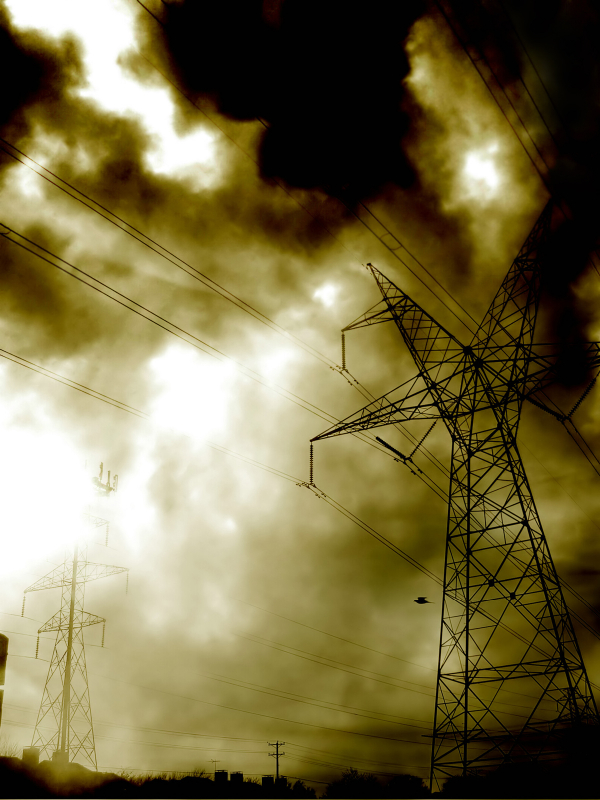The Wall Street Journal recently published an editorial, “The Great Transmission Heist,” that took a swing at renewable energy. That’s not surprising. What is surprising is that the piece wholly abandoned not only the facts, but fundamental market principles related to the energy sector. The Journal attacked a new Federal Energy Regulatory Commission (FERC) proposal [PDF] that would create a more fair and rational framework for modernizing the nation’s electric grid.
Specifically, the guidelines would ensure that everyone who benefits pays, regardless of arbitrary boundaries and proposals generated by various regions. Critics of the new rule, particularly incumbent utilities that have an interest in keeping their regions closed off from new transmission, have put forth a number of misleading and inaccurate arguments in their efforts to defend the status quo. The Journal bought them hook, line, and sinker.
The Bush Administration’s 2002 National Transmission Grid Report [PDF] accurately described the modern electric grid as “an interstate highway system for wholesale electricity commerce.” Like highways, transmission networks enable markets to function efficiently, delivering better reliability, increased competition, and lower prices to consumers. Transmission is also essential to developing America’s vast renewable energy resources. What FERC is proposing is an incremental increase in the scale and scope of transmission planning and cost sharing to advance critical national energy goals.
Contrary to what the Journal’s editorial claims, ratepayers have traditionally shared the cost of transmission because a reliable and efficient grid benefits everyone. Texas became the national leader in wind energy by adopting transmission policies like those that FERC has proposed: developing lines for renewable energy and spreading their costs among all ratepayers. The state’s grid operator estimates that its $4.9 billion transmission investment will save consumers $1.7 billion annually in fuel costs. Every study of the costs and benefits of major investments in transmission infrastructure in every region of the country has reached the same conclusion: grid investments pay for themselves in a few years. Implementing the Texas model across the nation would produce similar benefits.
Support for expanding and modernizing the grid is broad. Twenty-eight governors signed on to the Governors Wind Energy Coalition letter supporting transmission. More than 60 organizations and businesses, ranging from renewable energy developers to the Sierra Club and the AFL-CIO, signed the Energy Future Coalition‘s National Clean Energy Smart Grid Vision statement in 2009, which called for new federal policies to expand and modernize the electric grid.
So, who would oppose these critical investments? Incumbent utilities, that’s who. Every member of the group that is opposing the modernization of the grid, the so-called Coalition for Fair Transmission Policy (CFTP), stands to lose quite a bit if their regional monopolies are exposed to competition from cheaper and cleaner power sources. Most of the CFTP utilities serve constrained markets with high generation prices, including Michigan, New Jersey, Connecticut, and Massachusetts. Far from being a threat to the free market, FERC’s proposed transmission policies would force competition in these regions and protect consumers from power plant owners who want to charge them monopolistic prices for electricity.
And what exactly are these groups and the Journal supporting? They are supporting a system that’s broken and congested. A system that’s inhibiting regional planning that could build more transmission to eliminate congestion. A system that’s limiting the growth of renewable resources. This is why FERC has decided to intervene and level the playing field.
Northeast states want to keep their electric markets closed to protect local developers of renewable generation from cheaper competition. By distorting support for local economic development into protectionist policies, Eastern governors are in the unenviable position of maintaining high electricity prices for all consumers to protect the competitiveness of a select few local generation projects.
Such policies are bad for both consumers and renewable energy developers. Numerous studies have shown that new transmission would benefit development of all renewable resources, while bringing high electricity rates down. The National Renewable Energy Lab’s Eastern Wind Integration and Transmission Study predicted that transmission would enable rapid development of off-shore wind in the East — equivalent to hundreds of Cape Wind projects — with power flowing both east and west according to the different profiles of on-shore and off-shore wind resources. Grid operators in the Eastern U.S. found that transmission upgrades necessary to achieve 20 percent wind energy would pay for themselves in less than seven years, while slashing electricity prices for Northeast and Mid-Atlantic consumers — even though the vast majority of the transmission lines studied would be built in the Midwest.
Americans overwhelmingly support developing their vast domestic renewable energy resources to create jobs, stimulate growth of new industries, reduce dependence on imported fuels, and address the urgent environmental problems we face. A robust electric transmission grid is essential to achieving these goals. If local monopolies prevent competition from renewable energy by blocking transmission reforms, they profit at the expense of consumers and the nation. That doesn’t sound very pro-market — or patriotic — to us.



